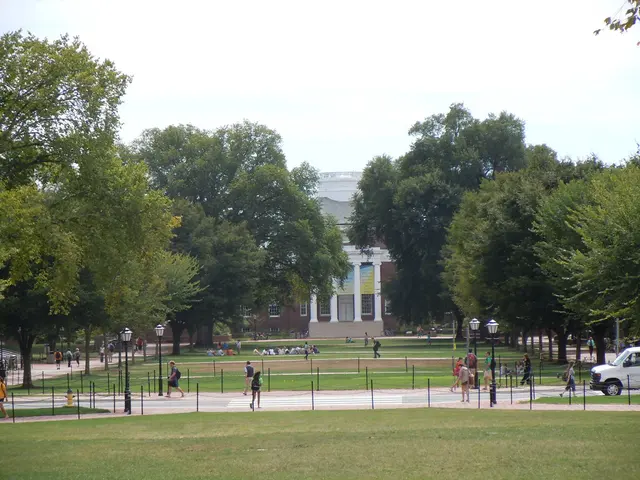Exploring Chernobyl for tourism: Aiding recovery or showing disregard?
In the heart of Ukraine lies the infamous Chernobyl Nuclear Power Plant, a site that serves as a grim reminder of the catastrophic disaster that occurred on Saturday, 26 April 1986. Today, it has transformed into a notable destination for "dark tourism," attracting visitors from around the world.
This tourism offers significant educational value, sharing the history and consequences of the disaster and raising awareness of nuclear safety and environmental issues. Economically, it generates revenue for local communities through tourism-related activities, contributing positively to their economy.
Dr Claire Corkhill, a top nuclear scientist and reader in Nuclear Material Corrosion at the University of Sheffield, is among those who support day trips to the Chernobyl exclusion zone. She collaborates with researchers at Chernobyl to study the remaining nuclear fuel within the reactor that exploded.
However, ethical concerns emerge because Chernobyl is a site of human tragedy and ongoing radiation risk. Some question the morality of "disaster tourism," arguing it risks commodifying suffering or disrespecting victims. The area remains sensitive due to environmental hazards and recent military conflicts that have threatened the site’s safety and containment structures.
Despite these concerns, ground-based guided tours for tourists have been permitted in Chernobyl and its surrounding areas for the last ten years. Dr Corkhill notes that while the levels of radiation are too high for people to be there for long periods of time, the radiation received on the ground in Chernobyl is comparable to the radiation received during a flight from London to Kiev.
Visits to Chernobyl help the local economy with the post-disaster clean-up. Ukraine International Airlines operates tours over the Chernobyl site, which they describe as one of the most popular tourist locations in the world. A standard day trip from Kiev, Ukraine to Chernobyl costs around £110.
The nuclear reactor in Chernobyl cannot be used for much until it is cleaned up. Dr Corkhill believes there is much to learn from visiting Chernobyl about nuclear engineering, Soviet history, nuclear thinking, and the future of nuclear power. She emphasises that you're not allowed to live in the Chernobyl exclusion zone due to high levels of radioactivity.
Attitudes towards Chernobyl as a tourist destination are divided. Some criticise it, while others find educational, respectful, or unique value in it. As the world continues to grapple with the complexities of disaster tourism and the site’s hazardous conditions, the future of Chernobyl tourism remains a topic of ongoing debate.
- Chernobyl, once a site of a devastating nuclear disaster, has transformed into a destination for dark tourism, attracting visitors from around the globe.
- The educational value of visiting Chernobyl is significant, offering insights into the history, consequences, and lessons of the disaster, as well as nuclear safety and environmental concerns.
- Tourism in Chernobyl generates revenue for local communities, contributing positively to their economy through various tourism-related activities.
- Dr Claire Corkhill, a nuclear scientist, supports day trips to the Chernobyl exclusion zone, collaborating with researchers to study the remaining nuclear fuel within the reactor.
- The morality of disaster tourism is debated, with some questioning its potential to commodify suffering or disrespect victims due to the site's human tragedy and ongoing radiation risks.
- Despite these concerns, guided tours for tourists have been permitted in Chernobyl and its surrounding areas for the last ten years, with visits to Chernobyl helping the local economy with post-disaster cleanup efforts.
- Visiting Chernobyl offers opportunities to learn about nuclear engineering, Soviet history, nuclear thinking, and the future of nuclear power, but it's important to note that living in the Chernobyl exclusion zone due to high levels of radioactivity is not allowed.




